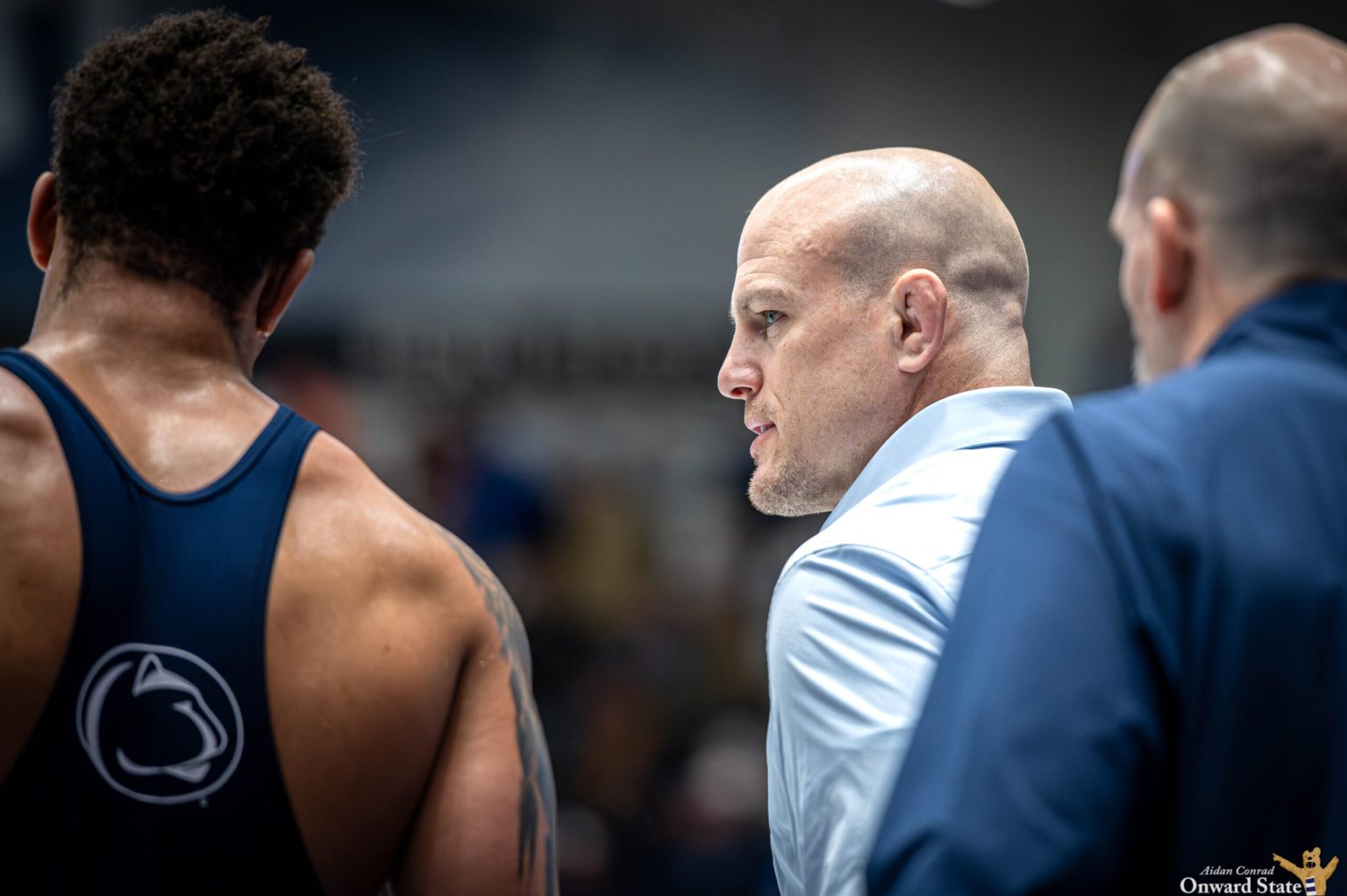In a lot of ways Carter Starocci’s national title — the fourth of his Penn State career — was the most absurd and also the most recent example of how ridiculous the Nittany Lions’ dominance in collegiate wrestling has become.
Consider the facts: A few weeks ago Starocci’s current title run began by dominating someone so badly that he hurt himself. Then, forced by doctors and/or coach Cael Sanderson to sit out of the Big Ten Tournament as a health precaution, Starocci took to social media to seemingly announce [publicly vent about] the end of his collegiate career, only to eventually announce his ‘return’ a few days later. By virtue of injury defaults at the conference tournament, Starocci was nearly seeded outside the top 10 of the 174 pound weight class heading into the NCAA Tournament. And then in spite of all of this, Starocci proceeded to beat everyone with his right leg wrapped in almost certainly as much supportive medical equipment as the NCAA would allow en route to a fourth national title.
That in and of itself would have been a big enough storyline. But then three more of his teammates also won national titles, Aaron Brooks joining Starocci as a four-time winner while Greg Kerkvliet and Levi Haines took home their first.
As a team, Penn State won its 12th national title with 172.5 points, breaking a team scoring record of 170 points set by Iowa in 1997. Runner-up Cornell came in second by a whopping 100 points, the first time ever that the winner posted a triple-digit margin. Wrestling team scoring might not come by as naturally as some other sports to calculate, but Penn State once again waltzed into Saturday night’s finals having already locked up the trophy. Then the Nittany Lions posted even more individual history.
For his part, Sanderson’s 11 national titles at the helm of Penn State’s program are tied with Ed Gallagher at Oklahoma State, while Dan Gable’s 15 national titles at Iowa continue to be the benchmark for greatness in the sport. Sanderson would likely be at 12 national titles if not for the COVID-19 pandemic, which robbed that year’s squad of its own chance of greatness.
From the perspective of pacing, Gable called it a career at Iowa just shy of his 49th birthday, reportedly for health and family reasons. Sanderson turns 45 in June. Assuming both Sanderson and Penn State maintain the same path ahead in the short term, it seems only a matter of time before Sanderson further cements himself as among the most successful coaches in any sport at any level, passing Gable in the process. What Sanderson’s secret sauce to all of this is remains a bit of secret; he is difficult to nail down for individual interviews and not particularly transparent with the formula which has led his career to this point. Then again, with the number of generational wrestlers he has worked with, having that kind of talent in bulk streamlines the process a bit.
“I’m not worried about that stuff,” Sanderson said on Saturday night. “When I got to college, (Gable) was retired. I think (his last year was) when I was a senior in high school. Obviously, I know a lot about coach Gable and the dominance they had and the excellence of the program, and they still have that excellence. But we’re doing our thing. We don’t worry about and try to compare ourselves to others. We’re trying to do the best we can be. As a staff, we’re trying to figure out what we can do better.”
All of this has led Penn State to a point where it can almost always pencil in the notion that late March will come with another national title. The athletic department at-large has now taken home 82 national titles with wrestling now accounting for 13% of them. Add in the once-dynasty of women’s volleyball and those two programs have accounted for just over 20% of Penn State’s titles.
Boiled down, the absurdity of Penn State wrestling can’t be overstated. It’s hard to quantify — especially in a sport not lacking interest, talent or prideful programs — how dominant Penn State has become. Maybe some of it is simply the acquisition of talent and the steady hand of a great coach, but if either of those things were easy then everyone would be doing them. Whatever the case, Penn State wrestling is among the greatest dynasties in any sport, at any level, at any point in time.
What only heightens the absurdity is what could still be on the way. Sanderson could — short of the unforeseen or simply sheer boredom — opt to coach for 15 or 20 more years without batting an eye. And with no real regular existential foes, Penn State could very easily eyeball 10 more national titles as a program over that span. It’s an absurd thought, and while winning is never easy there’s no obvious answer as to why that couldn’t happen.
And that’s just insane. But eventually it will be over. So enjoy your late March national title, even if they’ve become routine.



